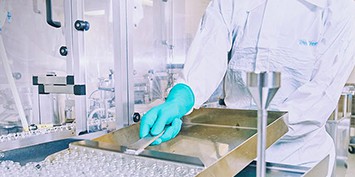A cleanroom environment is extremely sensitive to contamination regardless of the precautions taken to ensure its integrity. Once the cleanroom is secure, the only threat of contamination can come from the outside world, which is why outside contaminants must be kept to a minimum.
Staff entering the cleanroom must adhere to an exacting protocol. Individuals need to be sanitized to avoid any particle and biological contamination within the cleanroom environment.
This is achieved by multiple strategies, such as the wearing of sterilized suits and shoes, and, even more importantly, cleanroom face masks.
What are Cleanroom Facemasks?
Cleanroom face masks are specially designed masks worn over the face and nose to protect the wearer and ensure the sterility of the cleanroom.
Cleanroom face masks need to pass a more rigorous battery of tests than your average surgical masks. Aside from the pristine quality of the masks themselves, special attention is given to the packaging and construction to ensure an unequaled product that is sterile and as lint-free as possible.
How to Wear a Cleanroom Face Mask?
Cleanroom face masks need to be worn in a particular way for maximum effectiveness.
- Before putting the face mask on
Though the face mask is sterile, your hands are not. Cleaning your hands before and after using a face mask is a must. You should use antibacterial soap. Disinfecting your hands with an alcohol solution is another (faster) way of doing this, but, in this case, you need to train staff in the proper way of using an alcohol solution to disinfect hands. - Fitting the mask
Once you start putting on the mask, it should cover both mouth and nose to create an effective barrier with the outside world. This tends to be one of the reasons that staff may complain about cleanroom face masks since part of the air breathed stays within the hermetically sealed mask. - Sealing the mask
Once the mouth and nose are covered with the mask, you need to ensure that no air can escape or enter from the sides, then seal the mask. Depending on the type of mask, this may be achieved by pressing the fingers around the edges to conform to the contours of your face. - Breathing with a mask
After ensuring the integrity of your cleanroom face mask, you can start the vital activity of breathing! However, you must do so properly. That means: inhale through the nose and exhale through the mouth.
For further information on cleanroom facemasks or other cleanroom products, don’t hesitate to contact us.
The information supplied in this article is for guidance only. Not all cleanrooms will use the same procedures. Follow your specific cleanroom or company procedural manual before this guide.















